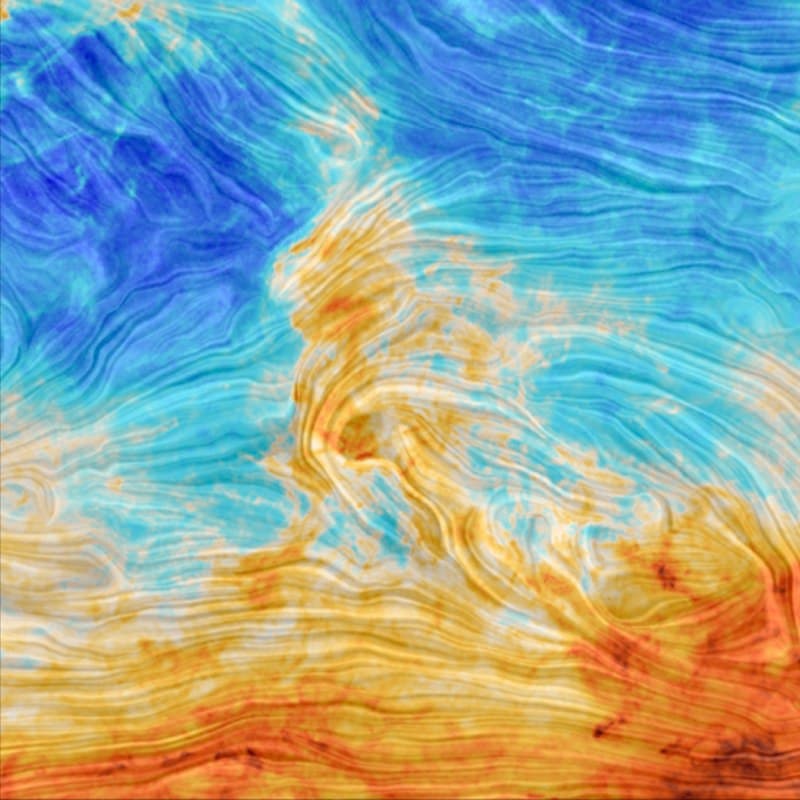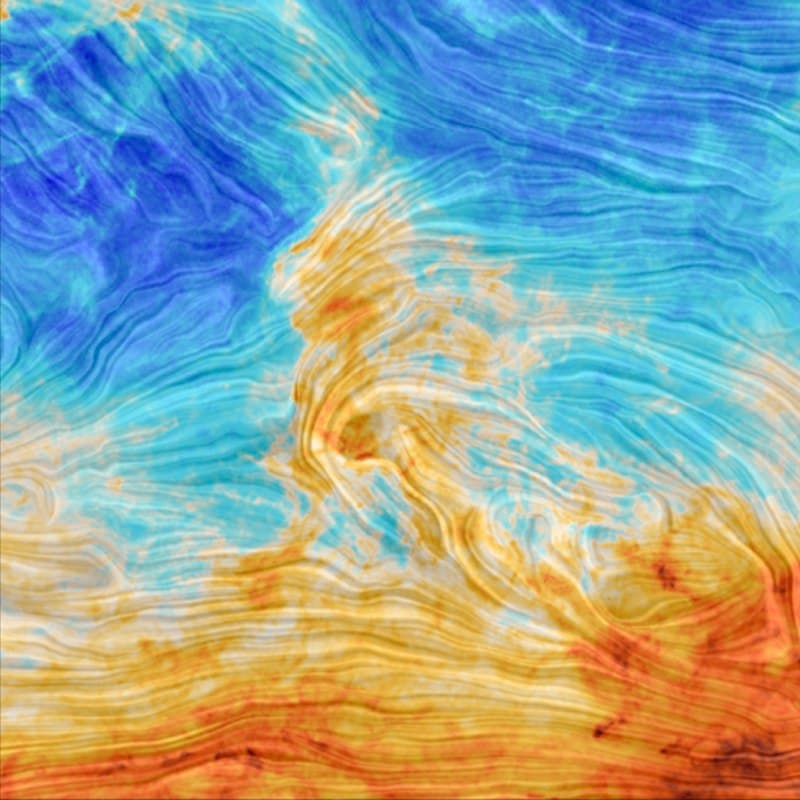Space images can often be breathtaking and the night sky has often inspired artists to produce incredible masterpieces. Sometimes even the way astronomers represent data can be both scientifically and artistically stunning.
Case in point is the polarization map released by the Planck Collaboration, which shows unique views of the universe, and reminds me of Van Gogh’s Starry Night.
The latest released map, posted on the ESA website last week, is about the Polaris Flare. This is a small molecular cloud 500 light-years away in the constellation of Ursa Minor, towards the celestial north pole (as the name obviously suggests).
The image shows the relatively warm (hundreds of degrees below zero) dust in the cloud, in contrast to the cooler background, and it appears to have formed some sort of elemental fire-sprite in the middle. Polaris Flare is the result of shockwaves, compressing interstellar dust into a cloud. Maybe one day a star would form from it.

Magnetic microwave map of the Polaris Flare. ESA and the Planck Collaboration
The relief lines, which give the post-impressionist feel, represent the magnetic field of the Milky Way. It’s absolutely magnificent that we can measure something as subtle as the magnetic field of our Galaxies in regions that we can’t travel to.
The researchers used a phenomenon called the polarization of light to measure the magnetic field. Sometimes photons are all oscillating in a particular direction, and when that happens we say that that light is polarized. Polarized filters are used in glasses and photography to reduce the amount of light, but also in 3D cinemas, so the special glasses block some of the light, each lenses letting through only part of the picture on screen. Our brain puts the two images together and the image appears in 3D.
Dust grains orientate themselves according to the magnetic field, and when photons interact with electrons inside and outside, clouds end up polarized.
This is not the first cool map released by the Planck collaboration. Check out this unusual view of the Orion Molecular Cloud. definitely a different look from what we see from the European Southern Observatory.

Magnetic microwave map of the Polaris Flare. ESA and the Planck Collaboration

